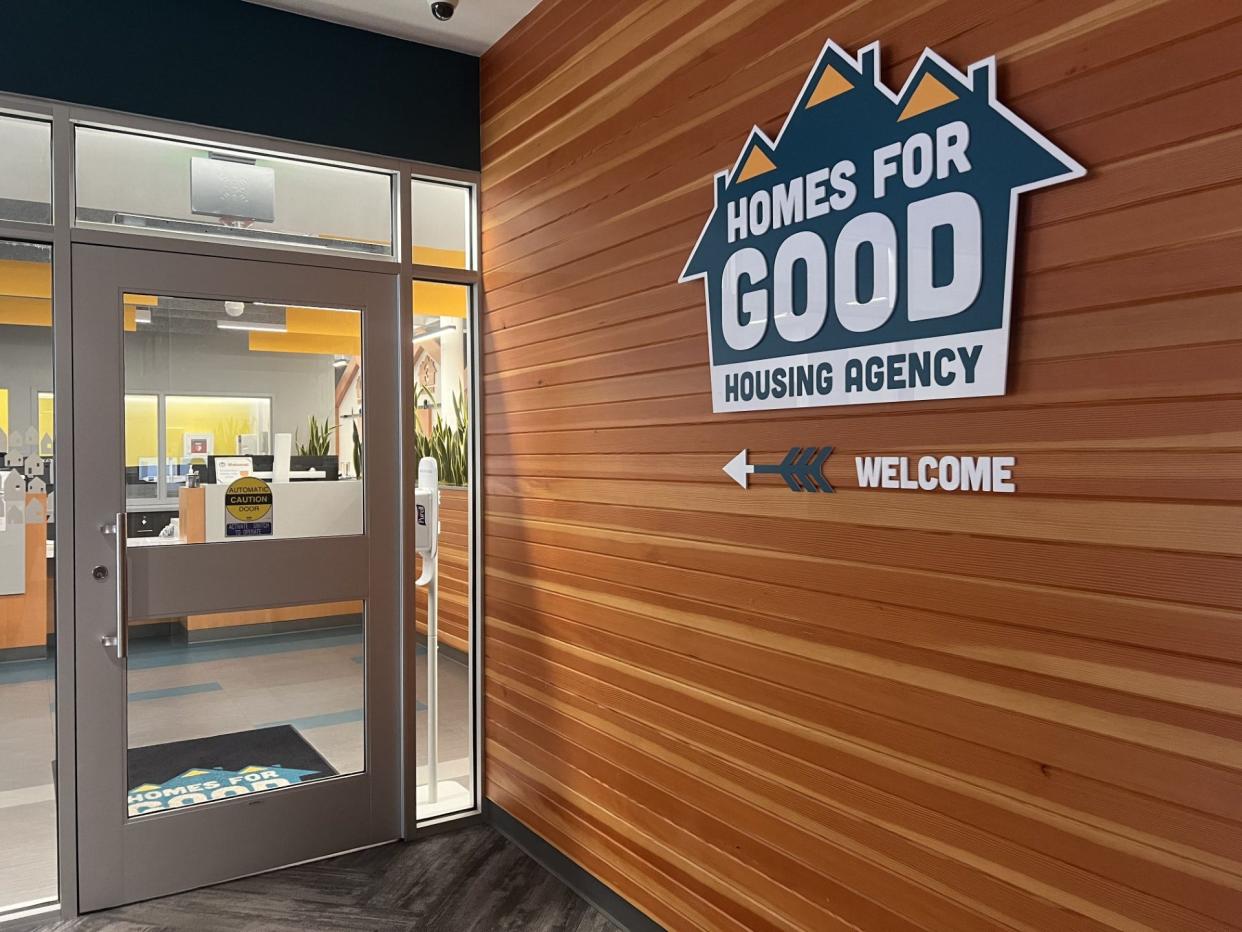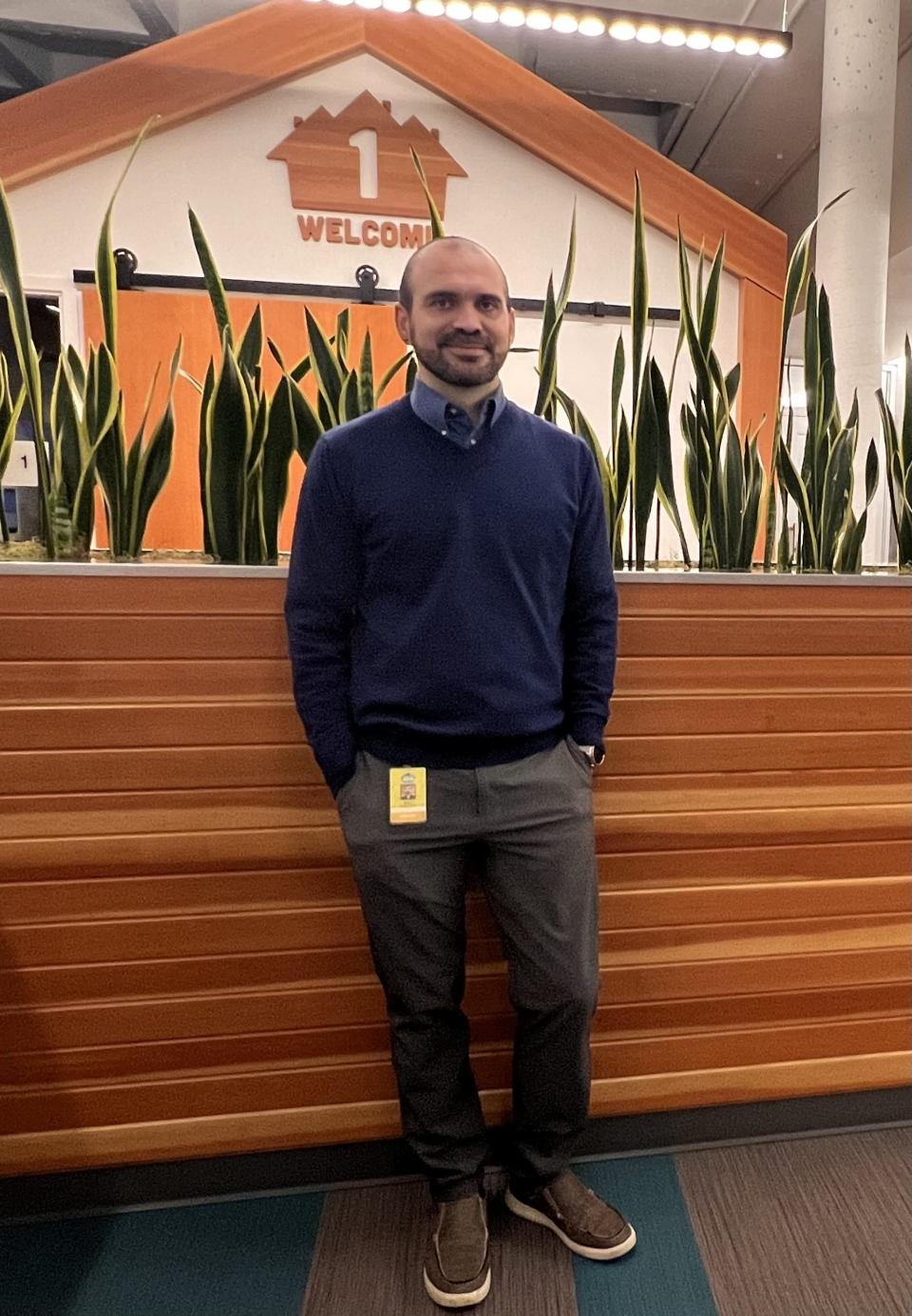Homes For Good offers winter weather support through weatherization, heat systems programs

The approaching chill of winter means preparation for frigid temperatures is well under way across Lane County.
For those who have shelter lacking adequate warming capabilities, Homes for Good, Lane County’s housing authority, offers two programs for support, a Weatherization program and a Heat Systems Crisis program. While both programs support health and safety within homes, there are a number of differences among the services each program can provide.
Weatherization Program
The weatherization program is a local tributary of the U.S. Department of Energy Weatherization Assistance Program, established in 1976, which provides low-income households with assistance in the weatherization of homes to increase their energy efficiency and warming abilities while reducing the cost and burden of energy.
Weatherization facilitated by Homes for Good can include a range of services from insulating attics, floors and walls, sealing air leaks, insulating heat ducts and installing energy-efficient appliances and LED light bulbs.
Both renters and homeowners have the opportunity to utilize services provided by the Weatherization Assistance Program through their local housing authority.
The program utilizes federal funding provided through the Low-Income Home Energy Assistance Program and the Energy Weatherization Assistance Program.
Why weatherize your home?
Weatherization is the process of protecting a building from elements such as wind and rain while reducing energy costs associated with maintaining a comfortable space. The weatherization of a space results in lower utility bills and a less impactful energy burden.
Weatherizing a building helps prevent unwanted moisture that can lead to mold or mildew, can help improve a home’s air quality and assists in maintaining a moderate in-home temperature when outside weather gets extremely hot or cold. This process improves the health and safety of occupants while reducing utility costs and the environmental impacts of heating and cooling.
Who can qualify for Lane County's weatherization program?
Program requirements are income-restricted and serve households that fall at or below 200% of the Federal Poverty Level, households receiving Supplemental Security Income or households that get Aid to Families with Dependent Children. The Weatherization program prioritizes households with elderly individuals, families with children, households with one or more family members with disabilities and households that have a high energy burden, where more than 7% of their gross income goes toward utility costs.
Esteban Montero Chacon, Homes for Good energy services director, said the program’s target population of low-income and energy-burdened households can see reductions in their utility costs anywhere from 20 to 50% of their original costs once weatherization of their home is complete and an energy audit is conducted.

“A lot of individuals we help fall under that category, they have low income and they have high energy usage so that puts them at a high energy burden. When we’re able to reduce that by 40, 50%, that is that many more dollars that now they have whether it be for medical care, whether it be for better food,” Montero Chacon said. “I think that’s a huge impact that goes in line with everything that we do for housing as well, how we keep individuals housed.”
How to apply for the weatherization program?
Applications for the weatherization program are available on the Homes for Good website. Homes for Good maintains a waitlist of people interested in utilizing its Weatherization program and works year-round to provide necessary measures for those needing home weatherization.
What happens after an applicant is determined to be eligible?
Once an application is reviewed to confirm income eligibility, the applicant is placed on a waitlist. Waitlist times vary depending on how many people are already on the list, the applicant’s utility provider, contractor availability and the availability of funding.
Approved applicants will then be contacted by an auditor who will conduct an energy audit of their home. Audits typically last three to six hours and work to assess the most efficient and practical ways to weatherize the space. Post-audit, a contractor will connect with the applicant to schedule a time for the weatherization work to be completed.
After the weatherization is done, a quality control inspector takes anywhere from one to three hours to examine the work and verify the contractor’s service in the home. At that point, the home is considered fully weatherized. Homes for Good aims to complete weatherization projects within 90 days of accepting and contacting program applicants.
Last year, Homes for Good completed 47 weatherization projects. This year, the organization has completed 41 of these projects and has 24 jobs open that can be completed by the end of the year. The weatherization program typically receives about $2.3 million in grant funding annually but an increase in support will provide the program with around $3 million in funding for each of the next four years.
Heat System Crisis Program
The Heat System Crisis (HCS) program differs from weatherization in that while weatherizing a space is a long-term solution to maintaining a home as comfortably habitable, the HCS program is intended to provide emergency and fast-tracked support for households without heat systems.
Who can qualify for the Heat System Crisis Program?
The HSC program is funded through Lane County’s Low Income Home Energy Assistance Program. Qualified households include those whose income is at or below 60% of the Oregon Median Income by household size. For a one person household, that's a gross monthly income of $2,605.50. Each additional person in a household adds $150.26 to the gross monthly income as the qualifying amount.
Those who can obtain support through the HSC program must meet three criteria: they must be experiencing a heat crisis that leaves them without any adequate resources to warm their dwelling, they must be a resident of Lane County and they must be income-qualified.
This program also serves both renters and homeowners. Landlords in Oregon have the obligation to provide tenants with heating sources adequate for the entire unit. Because of this, landlords should be the first point of contact for tenants looking to obtain necessary heating prior to contacting Homes for Good.
How to apply for the program?
Qualified applicants must reach out to Homes for Good either via phone at 541-682-2619 or via email at energyservices@homesforgood.org. Due to the emergent nature of the HSC program, there is a 48-hour follow-up period for people who reach out about obtaining emergency heating services or repairs.
What is the process overview?
Once contacted, Homes for Good will reach back out within 48 hours to verify a heating system failure with a pre-inspection. If no sources of warmth are directly available to the household, Homes for Good will provide the service recipient with a portable space heater while the heating system issue is resolved.
After verifying the cause of the heating system failure, the Lane County Low Income Home Energy Assistance program will confirm that the applicant’s income qualifies them to participate in the program. A contractor will complete the necessary repairs or installations and once an auditor verifies that the heat system is working properly, the program’s service is complete.
Montero Chacon said the HSC and Weatherization programs work in tandem to support the health and safety of residents.
“The intersectionality between the two programs, it’s huge,” Montero Chacon said. “One of the main goals that we achieve when we weatherize somebody’s home is that we actually have just expanded the useful life of a home.”
Both programs meet the same goal of improving the livability and comfort of residents in homes that may not meet the need for a warm space. Montero Chacon said a big part of these resources is using the immediate need for heating through the HSC program as an opportunity to encourage individuals to also look into weatherization so the immediate need for heating is coupled with the long-term energy and cost-effectiveness benefits of weatherization.
“The main goal of this is actually health and safety so we are able to address some small health and safety issues when we are there and we are right away able to fix the heating issue,” Montero Chacon said. “We make sure that people get signed up on that weatherization list if they’re not already on it."
The workers don't just fix the unit or the furnace if it’s broken, Montero Chacon said. "We go and assess, ‘Is this a non-efficient electric furnace? Can we give them a more efficient system now while we’re here already?’ ... it just guarantees this person has a warm, comfortable, dry home hopefully they can live in.”
The HSC program is typically funded with $35,000 to $40,000 a year, which can cover costs for around 12 jobs.
Flip Side: How to beat the heat?
While overheating isn’t a concern in November, Oregon’s summers have been warming, with extended periods of high temperatures and more frequent heat domes. As the need for air-conditioned spaces in summer heat waves increases, legislation providing assistance for the prevention of heat-related illnesses has been passed, creating the Community Heat Pump Deployment Program. The program provides grants to eligible households in need of heat pumps that help bring temperatures down to more comfortable ranges.
Homes for Good is making plans to shift the HSC program into a Climate Crisis program. This shift would allow the program to assist not only households impacted by a lack of adequate heating in winter but also to support the increasing need for air conditioning in the summer months.
Montero Chacon said Oregon is historically not a state where cooling services are necessary the summer but Homes for Good is working with the regional Community Heat Pump Deployment Program administrator, Earth Advantage, to write grant proposals and get rebate systems set up for cooling services. The funding for this new service will be allocated by the Department of Energy.
“The Heat (Systems) Crisis Program, we are looking this year into changing it into a climate program, so like a climate crisis program and that is our intention,” Montero Chacon said. “Now when people call us and say, ‘I don’t have cooling in the summer,’ we’ll be able to address that, too, which is something that traditionally, we have not been able to.”
For those looking for ways to lower their utility bills and utilize more efficient appliances, Homes for Good facilitates an Energy Education program with tips and tricks.
Hannarose McGuinness is The Register-Guard’s growth and development reporter. Contact her at 541-844-9859 or hmcguinness@registerguard.com
This article originally appeared on Register-Guard: Supportive Homes For Good programs help those needing warmth in homes

